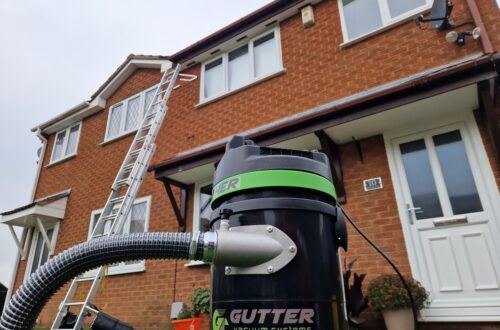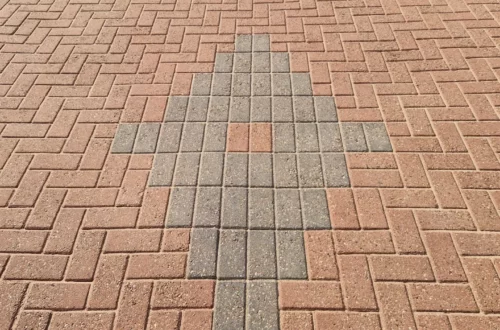What You Need to Know Before Starting a Driveway Pressure Washing Business
Getting Started in Exterior Cleaning
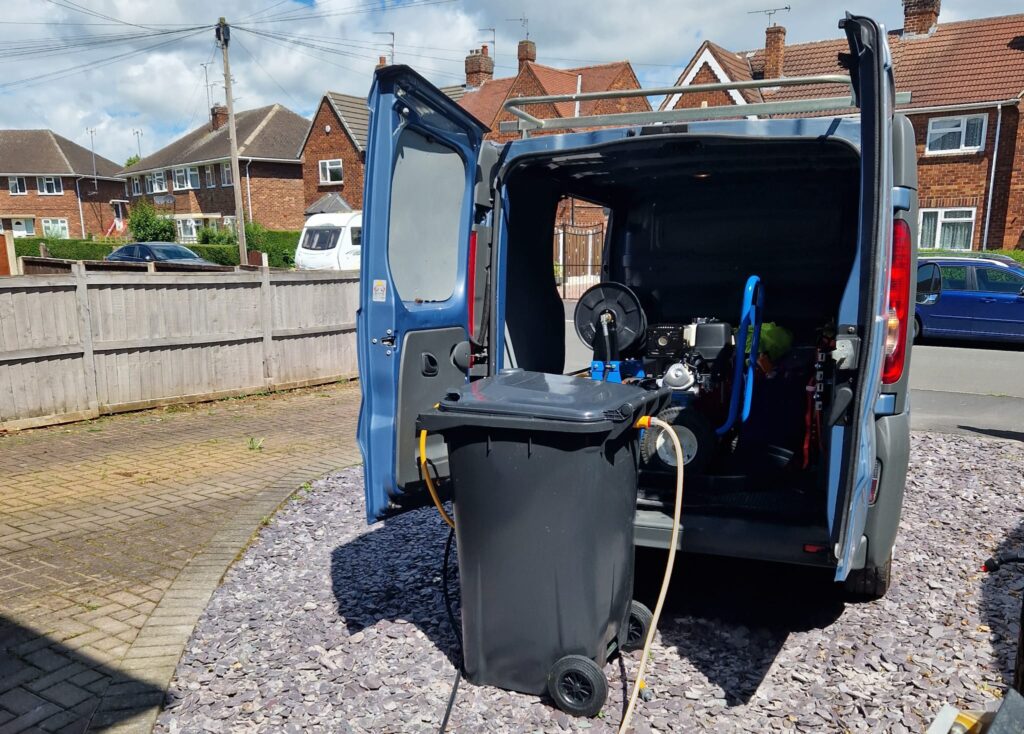
First off, I want to start with something I’ve mentioned in previous posts. I think it’s safe to say that most of us, myself included, got into the exterior cleaning industry after watching pressure washing videos online.
Let’s be honest, they’re addictive to watch. There’s something satisfying about seeing a dirty driveway or patio transformed in minutes. And while these videos can be really informative depending on whose channel you’re watching, they don’t always give you the full picture.
One thing I’ve noticed is that a lot of people underestimate just how much time and graft is involved in pressure washing. It’s not just a case of blasting away dirt. It’s physically demanding, and jobs can take much longer than you’d expect, especially when dealing with stubborn stains, drainage issues, or uneven surfaces and more.
I would like to point out a few key things so you know exactly what you’re getting yourself into before diving in. I’ll also share some insights on equipment and methods I’ve picked up along the way to help you work smarter, not harder.
Factors That Affect Driveway Cleaning Time
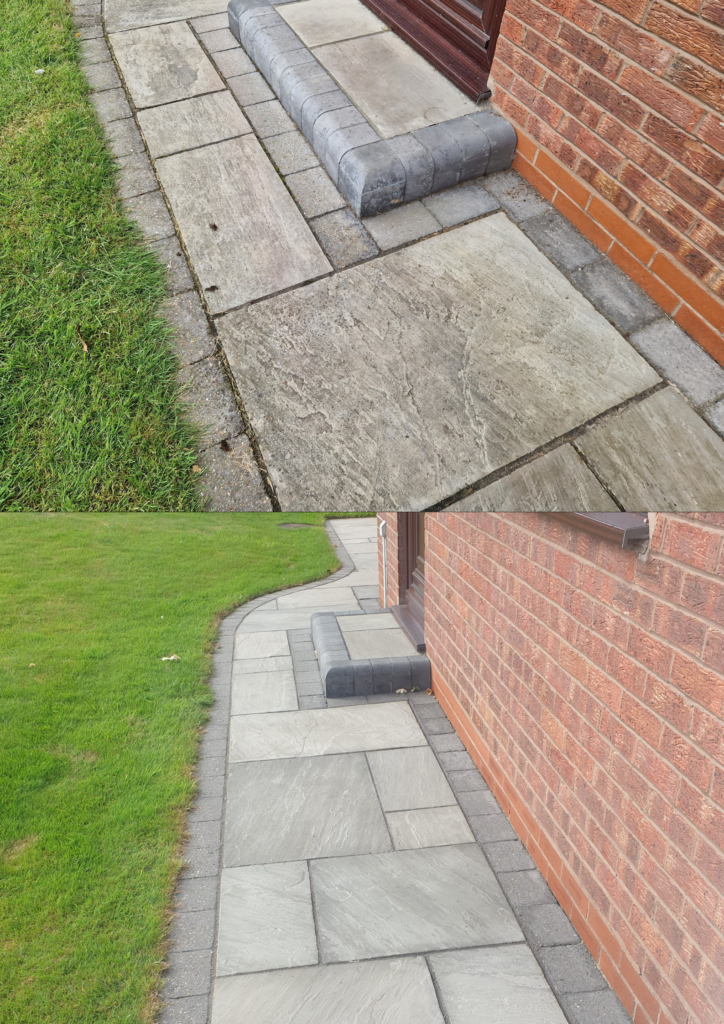

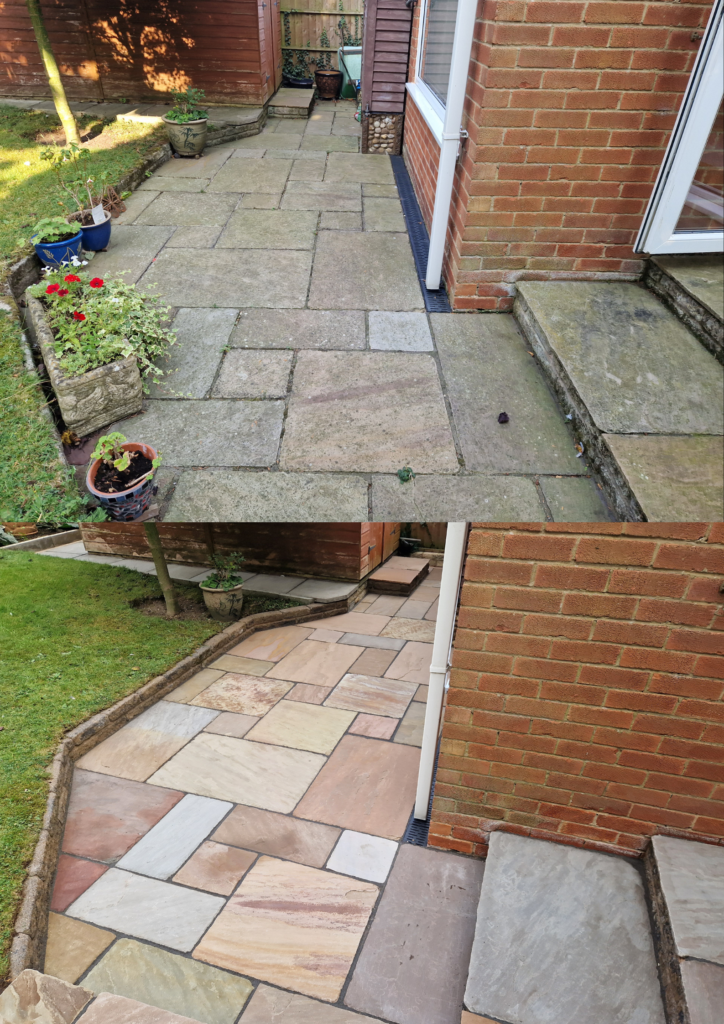
Driveway and Patio Size Affects Cleaning Time
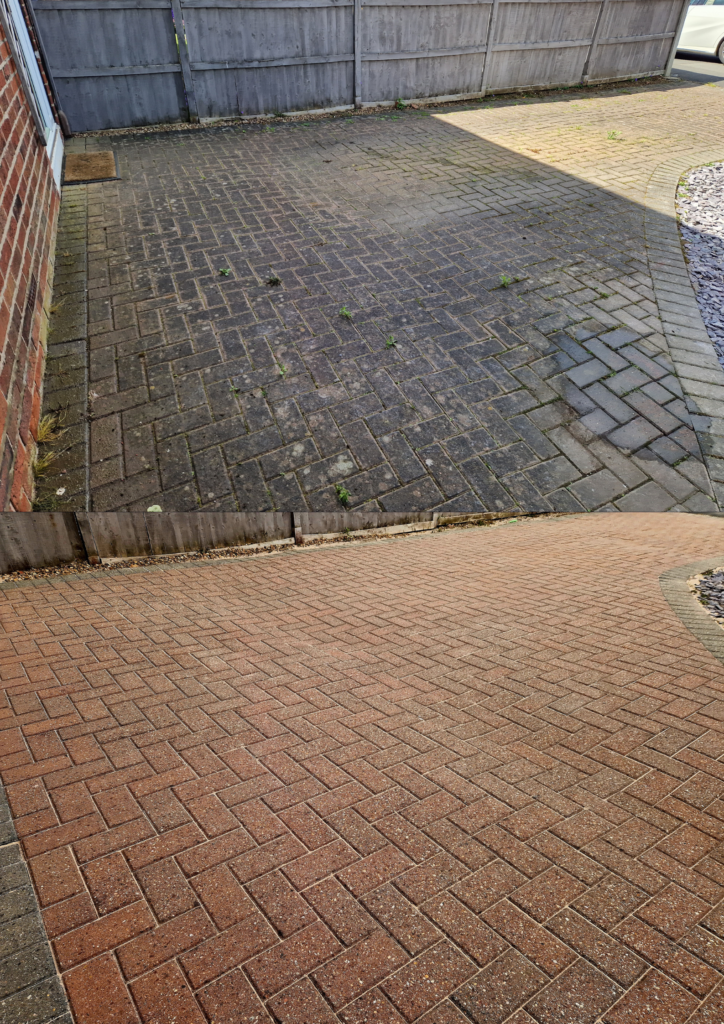
This might seem obvious, but the size and surface type of a driveway or patio will dictate how long it takes to clean. I bring this up because, when you’re new to the game, you will almost certainly underestimate the time required, even for a small driveway.
Early Jobs Can Take Much Longer Than Expected

Even with decent equipment, the first few jobs can feel like they take forever. Personally, I haven’t tackled any very large driveways yet. The biggest I’ve done so far was around 75m², which is roughly enough space for three cars with some walking room.
Most professionals would probably consider this a standard job. That said, when I was starting out, my first 5 to 10 jobs took me all day. Some dragged on for nearly 12 hours, while the average was around 9 hours of constant graft.
The Reality of Starting Out: Slow Progress and Self-Doubt
I knew going in that I’d be slow at first, but I was still shocked at just how slow I actually was, and to be honest, it did concern me a bit. My first thought was, “How the hell am I going to make a decent living doing this?”
The jobs were taking so long and requiring so much effort that I struggled to see how it could be sustainable. If small driveways were taking all day, how was I ever going to handle larger jobs?
A Challenge That’s Rarely Talked About
This is something that isn’t always mentioned in pressure washing videos, or at least it’s not the number one aspect of the video we usually ask about or take in to regard when we think of setting up for ourselfs, but it’s a big realisation at first.
The good news is that with experience, better techniques, you do feel things speeding up and with the right tools, things do get quicker. But at first, be prepared for some long, exhausting days.
Managing Expectations: Speed Comes With Experience
Don’t go into this thinking you’ll be smashing out three block paving clean and re-sand jobs a day, because for most experienced guys, that’s just not realistic, never mind for someone new to it with limited equipment.
Block paving in particular takes a lot longer than you might expect. It’s not just the cleaning, it’s the pre-wash, removing all the debris from the joints, treatment, drying time and re-sanding that really add up. Even with the best equipment, it’s a job that needs patience and proper planning, otherwise you find yourself behind the clock.
Focus on Quality First, Speed Will Follow
So if you’re new to it like me, try not to stress about speed like I do. Focus on getting the job done right, and over time, efficiency will come naturally. Below is a link to an article I wrote about bits of kit I purchased that do speed things up when pressure washing driveways.
4 Best Pressure Washer Accessories for Beginners | Quick & Efficient Cleaning
Surface Types Make a Huge Difference in Time and Effort
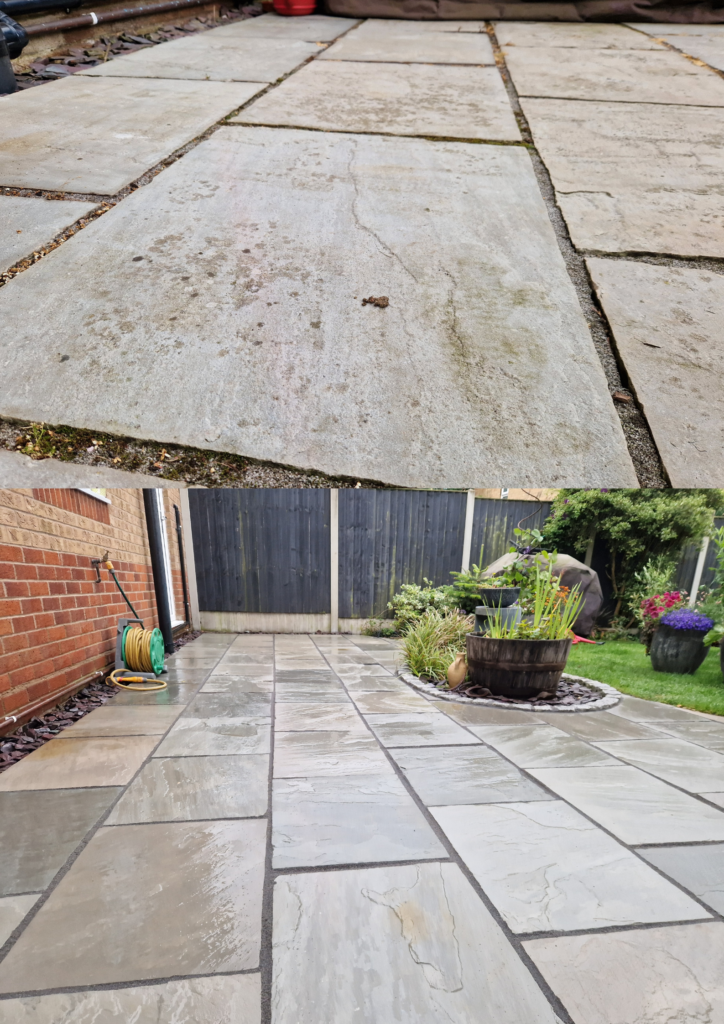
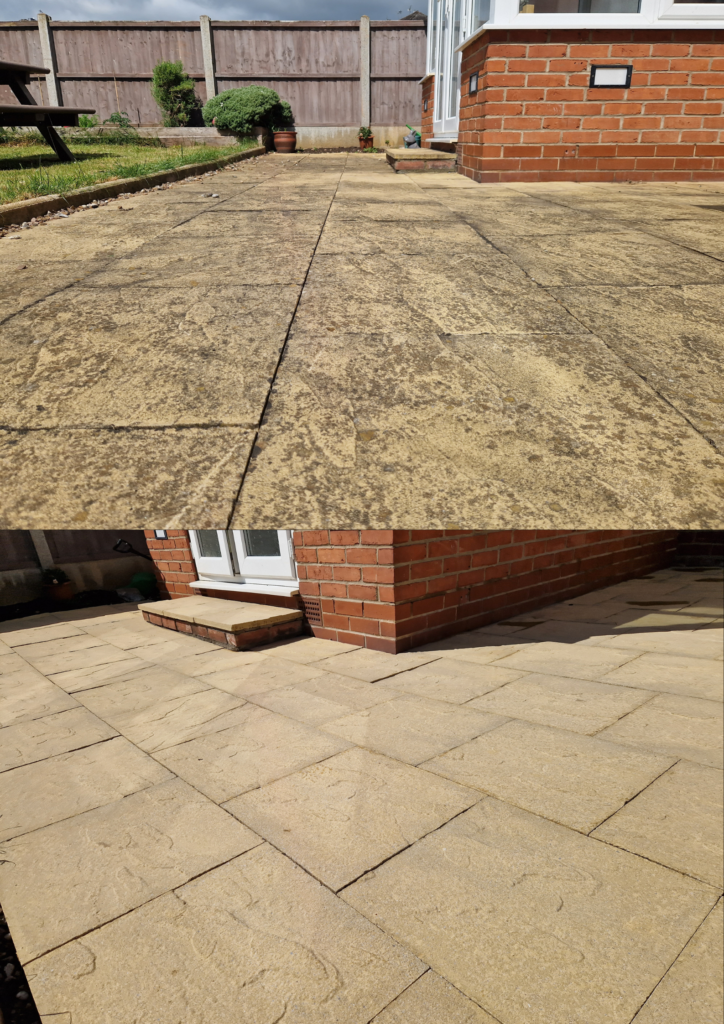
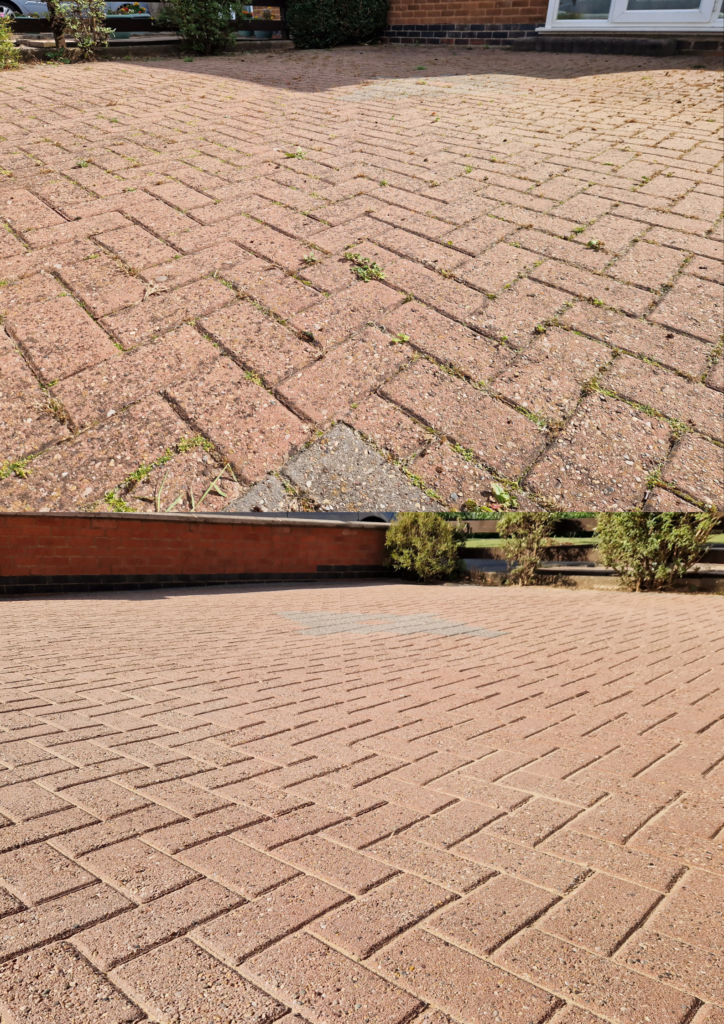
Different surfaces will play a major role in how much time and effort a job takes. Using the pressure washer is only half the job not the whole job. As I briefly mentioned before, let’s take block paving as an example.
Cleaning Block Paving Takes More Work
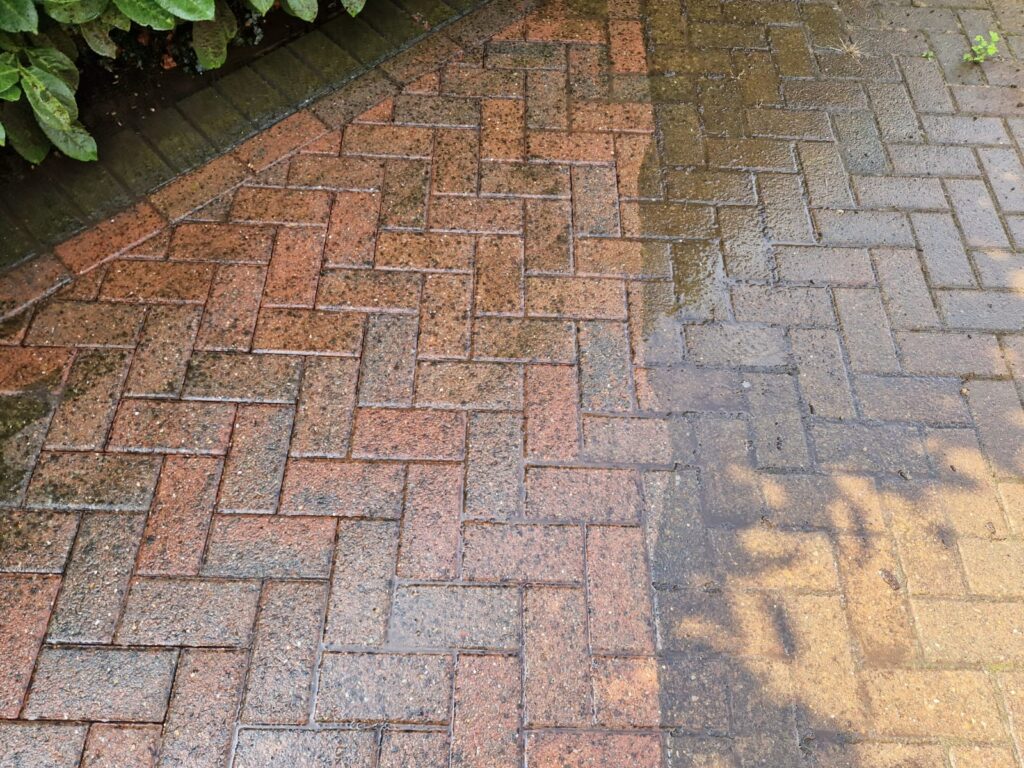
To properly clean Non Permeable block paving, you need to remove dirt, moss, black spot, and other organic growth from the surface layer. But the real work comes in removing all the dirt and growth from between the blocks to prepare it for re-sanding.
For this, you would typically use a surface cleaner and a turbo nozzle lance. In my experience, a turbo nozzle lance is the quickest way to get the job done as it easily blasts out muck from between the blocks. However, even with the right tools, block paving requires a lot more graft compared to some other surfaces.
Once cleaned, Non Permeable block paving also requires re-sanding to restore its structural integrity and finish. Depending on the weather, this is best done the next day once the surface has dried properly, this can sometimes be done the same day if we just so happen to have a really hot day in the UK. Regardless, this adds even more time to the job compared to other surfaces that do not need this step.
Surfaces Like Pattern Imprinted Concrete Are Much Simpler
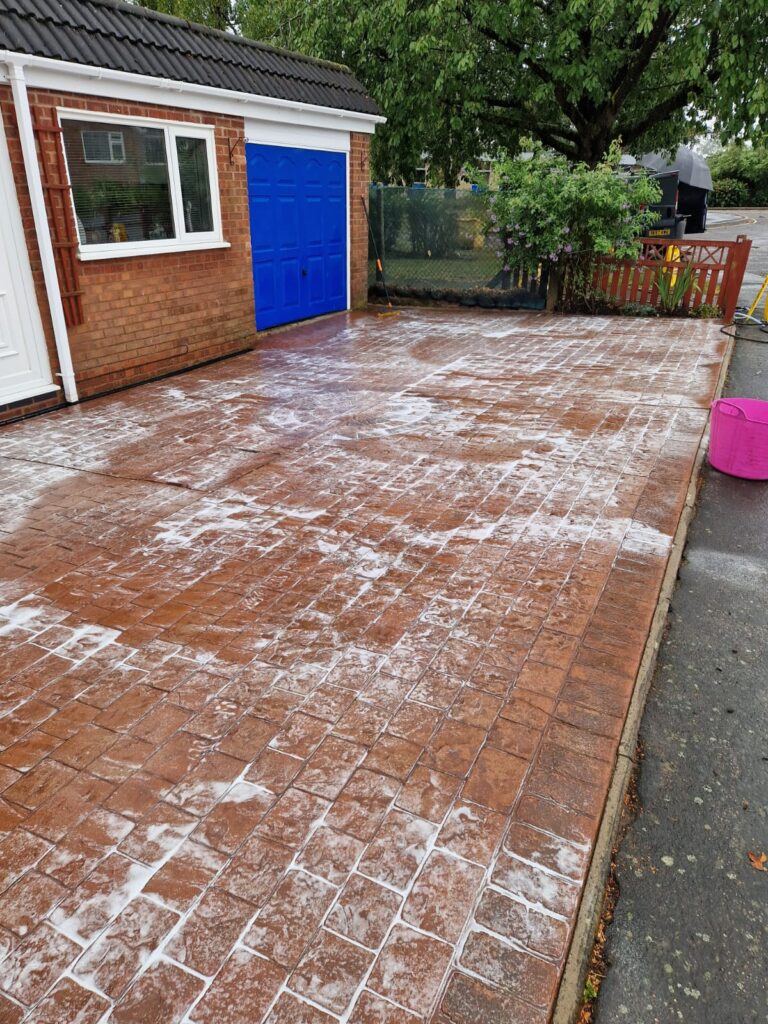
A pattern imprinted concrete driveway is far easier to clean because it does not require task such as re-sanding. For example, let’s say that you come across a concrete driveway with heavy moss and growth on it. The cleaning process would be much more straightforward, less messy overall, and can usually be completed in one quick visit.
The same applies to patios, where the level of effort needed depends on the type of slabs and the condition of the joints.
Patio Paving and Jointing Considerations

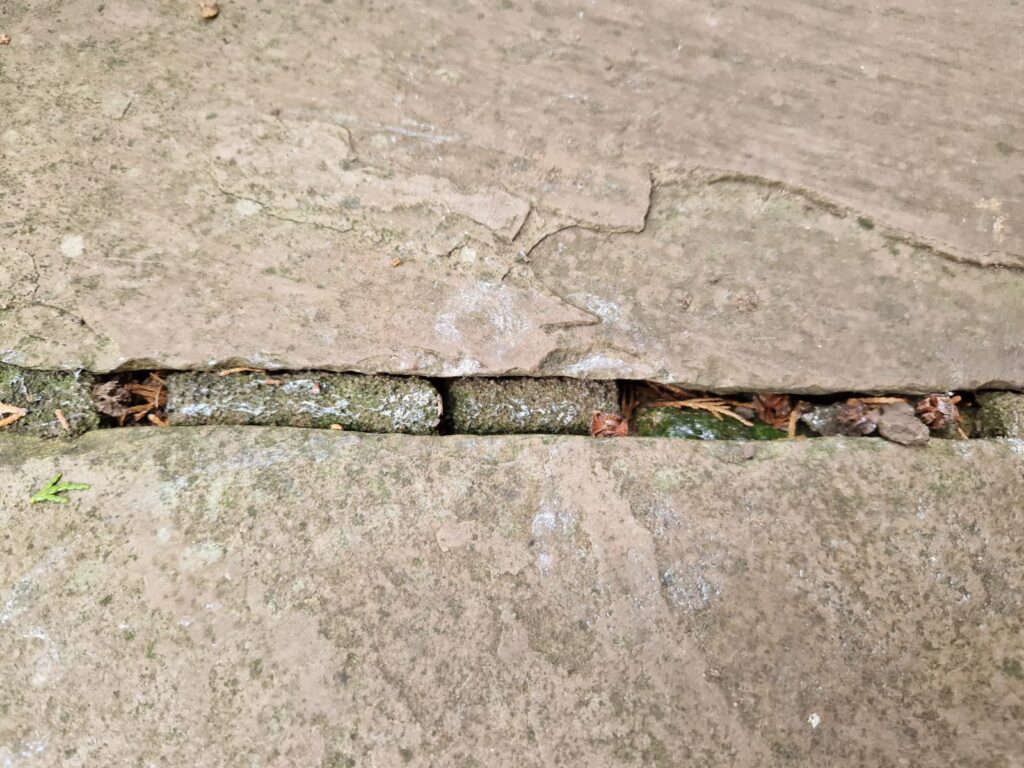
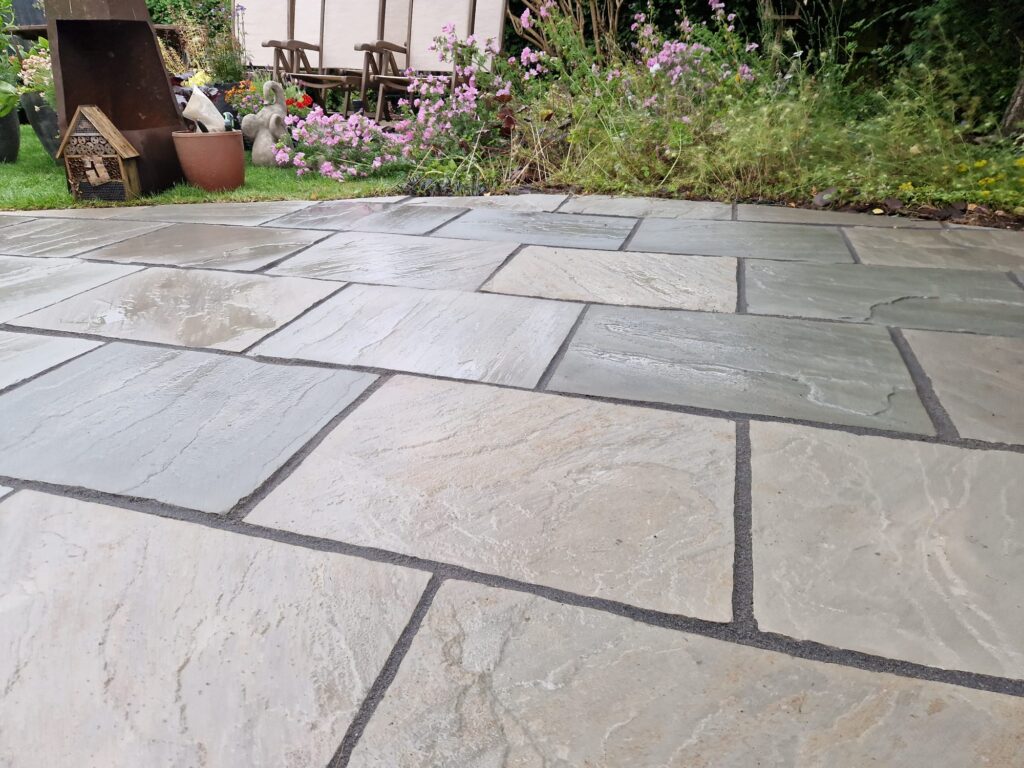
If a customer has a patio like an Indian sandstone one, the cleaning time will largely depend on the condition of the joints. If they are still in good shape, a low pressure wash or softwash should be enough to get the job done without too much hassle.
If the joints are deteriorated and need re-jointing, the job becomes much more involved. The old jointing material, whether it is cement mortar or a jointing compound like Pavetuf, will need to be removed before the entire patio can be re-jointed. The first time I took on a job like this, I assumed I would have it done in half a day, even with the re-jointing.
In reality, it took me nearly two full days to clean 65 square metres of patio slabs and re-joint the whole thing on my own. I had completely underestimated the time needed, and when I realised how much longer it was taking, I felt frustrated knowing I had not accounted for that in my quote.
Not to mention the underestimation of the amount of jointing compound I would need to even complete the job which also came out of my pocket. This particular job had me in the red.
This is something that catches a lot of people out. From the outside, it might seem like a straightforward pressure wash and treatment job, but once you get started, you soon realise there is far more prep and post cleaning work involved than expected. Like I said at the start, not all the work is done by water and pressure alone. there are more timley aspects to it which are not always considered.
4 Common Mistakes To Avoid When Using Jointing Compound On Patios
Clear Communication is Key
This is why it is important to clearly communicate with the customer before starting the job and try your best to recognise the amount of work that needs to be done. If the job requires joints to be replaced, it is a separate service that should be discussed upfront when quoting and properly accounted for not only from a money standpoint, but also time, Otherwise, you could find yourself taking on unexpected extra work and spending far longer on a job than you planned for.
Cleaning the surface itself is usually the easy part, but it is the preparation and finishing work that adds the real time and effort. Knowing this in advance will help you quote correctly, manage not just your customers expectations but your own, and help avoid surprises.
The Overlooked Time Costs of Setup and Cleanup
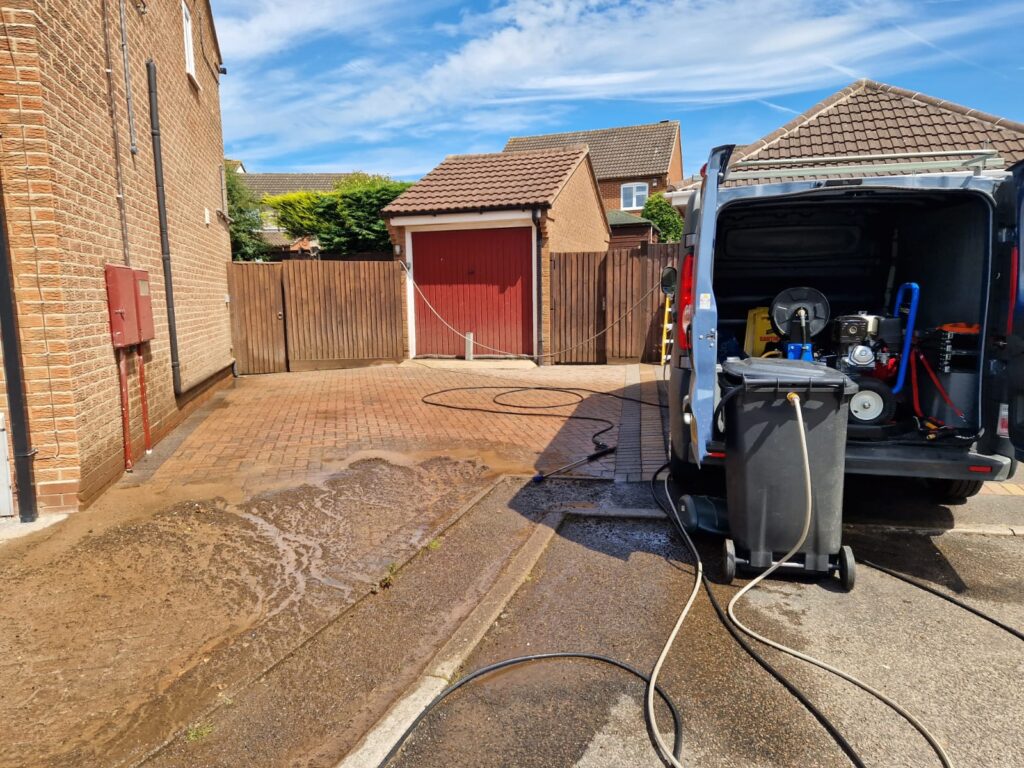
One of the biggest things you may overlook when starting out in pressure washing is the time it takes to set up before a job and clean up afterwards.
Setup Takes Longer Than You Think
When you arrive at a property, you need to set up your buffer tank, pressure washer, and hoses before you can even begin cleaning. This might not seem like much, but on average, it still takes me at least an hour to get everything ready in the morning. That is assuming everything goes smoothly, such as having a good water supply from the customer’s outside tap.
You also need to allow time for your buffer tank to fill and make sure your equipment is positioned correctly before starting. If you do not plan for this, you can find yourself behind schedule before you have even started. I will leave a link at the bottom of this section for an article that goes into more depth about using a buffer tank.
Cleanup is the A Time Consuming Part
The setup is one thing, but cleaning up afterwards can be one of the most time consuming parts of a pressure washing job. This is something I massively underestimated when I first started and never really thought about.
Cleaning a driveway or patio is only half the job. The mess created during the process can be just as much work to deal with. Not only do you have to clean the surface itself, but you also end up making a mess of surrounding areas, including windows, walls, doors, fences, and even neighbouring properties if the spray travels.
This can be frustrating at first because it feels like you clean one thing, only to make a mess somewhere else and then have to clean that too. It is completely unavoidable and something many beginners do not account for when first getting into pressure washing.
Cleaning as You Go Saves Time
To avoid spending extra hours at the end of the job, I have found that the best way to manage the mess is to clean as you go. Waiting until the very end can easily add another two hours of work just for washing everything down, shovelling debris, and repeating the process.
A simple tip that saves time is to rinse down nearby surfaces as you work, keeping everything as tidy as possible throughout the job. You will also need to make sure you have at least a small window cleaning kit so you can clean the windows properly once you have finished with the pressure washer. This is unavoidable and something that needs to be accounted for any driveway cleaning job.
Do I Need A Buffer Tank For My Pressure Washer
Drainage Considerations
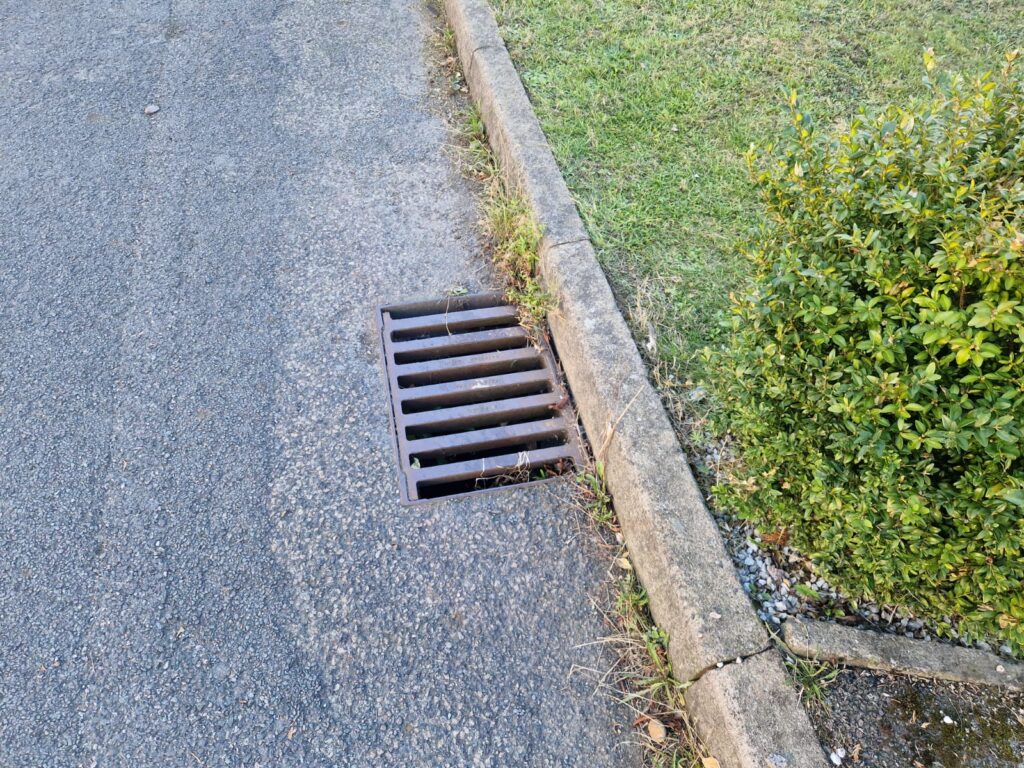

When visiting a property, always take a moment to check for drainage. I have caught myself out a couple of times in the past, and it ended up costing me more time on site than expected.
Checking for Blocked Drains
It is not always possible to tell if drains are blocked when quoting a job, but do your best to check. At the very least, consider where most of the excess water from the pressure washer will go.
I have had a few jobs where water pooled in certain areas, and it became a nightmare to get rid of. I would recommend keeping a small water pump handy for situations like this, as it will save you a lot of time if you ever come across standing water.
Unexpected Drain Unblocking
On some properties, I have had no choice but to unblock a drain myself, which added another one or two hours on site that I had not accounted for. This is something to be aware of when planning your schedule and quoting jobs.
Managing Chemical Runoff
If you are using chemicals like sodium hypochlorite, be mindful of where the runoff is going. Ideally, when rinsing down after treatment, guide the water away from drains and into a gravel area or somewhere it can drain naturally. Avoid directing it into flower beds or other sensitive areas. This can sometimes be tricky, but it is best practice to minimise environmental impact and is always best practice.
Having the Right Equipment
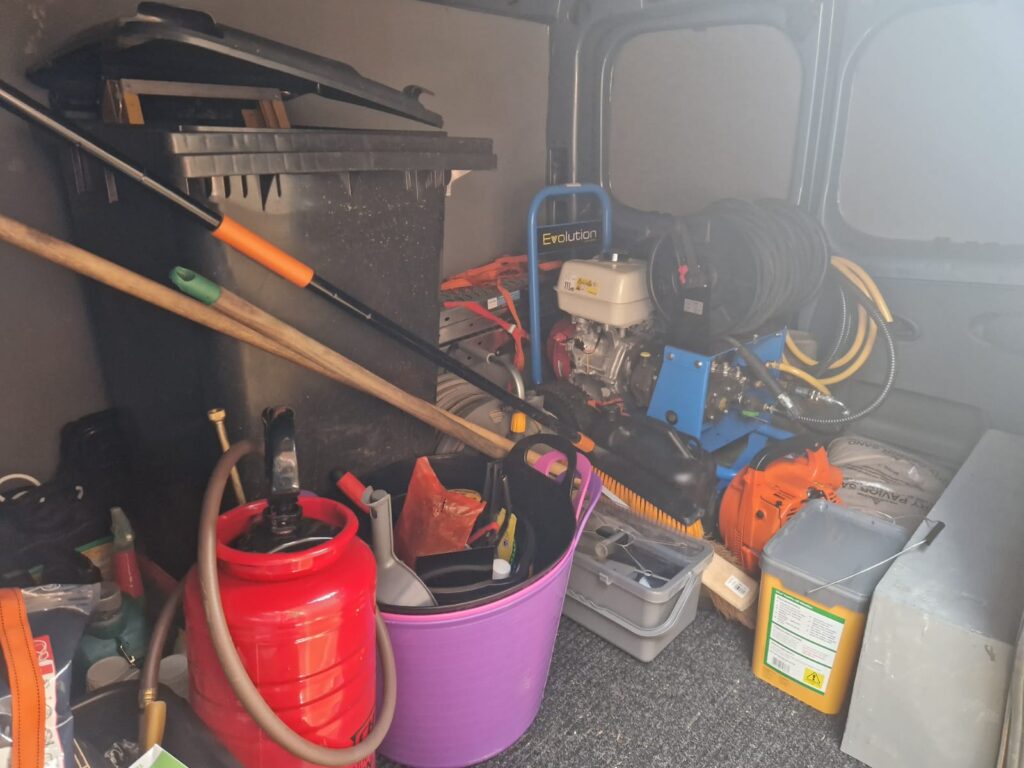
This is a tricky one because a lot of it depends on the budget you have. Let’s start with the most important piece of equipment, the pressure washer.
Choosing the Right Pressure Washer
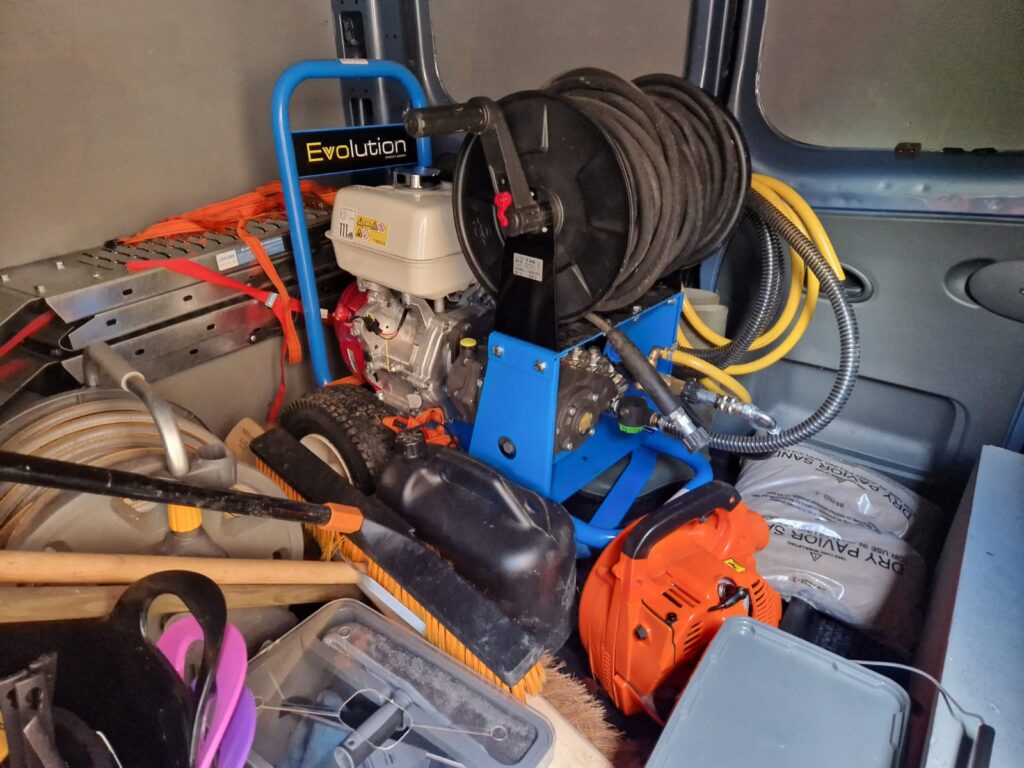
Funny enough, I started off with a 21LPM Honda GX390, which is considered the industry standard from what I have heard. Even with this machine, driveway and patio cleans seemed to take me longer than they should. I now put this down to experience and cleaning methods rather than the machine itself.
My point is, if you have a smaller machine that only produces around 10LPM, pressure washing jobs will take much longer, especially when you are first starting out. The equipment you use will have an impact on how long jobs take, so it is something to carefully consider when setting up.
Finding a Balance Between Budget and Performance
I am not saying you need to spend crazy money, but one thing I would recommend is getting a pressure washer that produces at least 15LPM, and if the budget allows, go for a 21LPM. The higher the litres per minute, the more efficient your cleaning will be, which means less time spent on each job.
If you would like more details on the kit I bought when I first started, feel free to check out the links below where I have tried to explain the topic in more detail. Having the kit listed in the article will definitely get you started, but you would probably get away with less depending on the budget you have.
What Do I Need To Start A Pressure Washing Business
Conclusion: Accounting for the Time
This final point ties into everything I have talked about in this article. When you are first starting out, I would strongly recommend booking only one pressure washing job per day.
Do not make the mistake of thinking you can easily fit in two jobs when you are still learning the ropes. Doing this will most likely leave you stressed about time and in the end, you probably will not complete both jobs properly anyway.
Quality Over Speed
Trying to squeeze in too much too soon often leads to rushed work and poor results, which is not a good look for you or your business. I learned this the hard way when I told two friends I would clean their driveways on the same day, thinking I could manage both on a Saturday. In reality, I barely finished one driveway that day.
Luckily, because they were friends, they were understanding, but it was a real eye opener. It made me realise that pressure washing is a lot more time consuming and physically demanding than I first thought.
Do Not Underestimate the Workload
It is easy to assume that pressure washing a driveway is quick and straightforward, but the more jobs you do, the more you realise that there are unexpected challenges that add time and effort to each job. There is a lot more to it than just spraying water.
The preparation, drainage issues, clean up, and post treatment/dwell time all add up, and they are often not mentioned in some of the YouTube videos that make it look easy.
The biggest lesson I learned when setting up was that exterior cleaning is not as easy as it looks. It takes proper planning, the right equipment, and a realistic approach to job scheduling.
How To Quote Accurately For A Block Paving Driveway Clean?
Exterior Cleaning, England, South Yorkshire UK



